Recent Articles
Popular Makes
Body Types
10 Things You Need to Know About the 2020 Ford Escape Hybrid
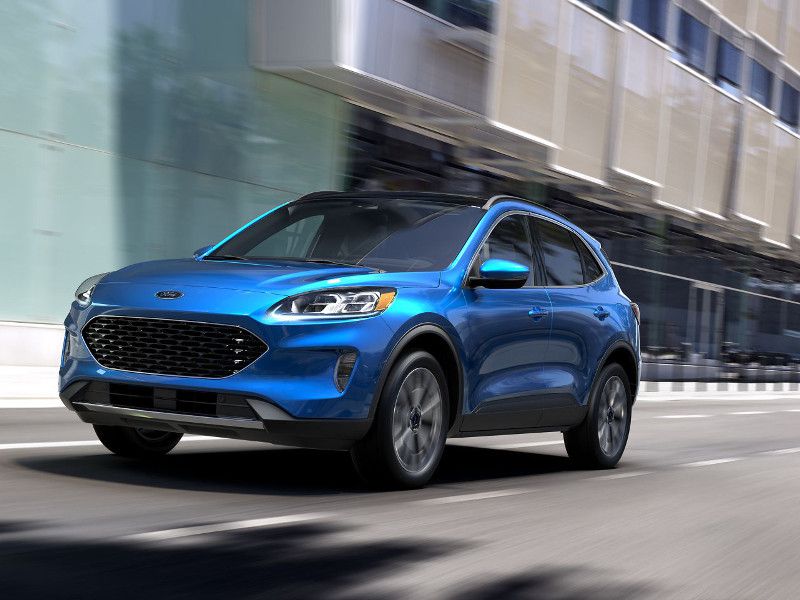
2020 Ford Escape blue driving in city ・ Photo by Ford
In 1995, Toyota introduced the first small crossover SUV in America. That original RAV4 was a big hit, and Ford wasted little time putting a direct competitor on the road. Still ahead of the curve when it arrived in 2000, the first Ford Escape was exactly the right shape, size, and price, making it an instant hit.
Half a decade later, Ford beat everyone to the punch by debuting a gas-electric hybrid version of the Escape. Effortlessly efficient, the Escape proved its mettle serving in New York City taxi fleets, and Ford says some of them are still prowling the streets of Manhattan today. Given the abuse they must endure, that’s downright miraculous. Now, after Ford put it on ice for seven years between 2013 and 2019, the Escape Hybrid returns better than ever. Here are 10 things you need to know about the 2020 Ford Escape Hybrid.
1. The original Escape Hybrid was a world-first.
Before we get to the all-new 2020 model, it’s worth noting that the original 2005 Ford Escape Hybrid was the world’s first hybrid-powered SUV. Rated to get between 27 mpg and 29 mpg in combined driving, depending on whether or not it had all-wheel drive, it was significantly more efficient than its gasoline-engine counterparts.
Better yet, Ford didn’t change the Escape’s styling or compromise interior room much. Aside from requisite “Hybrid” badges and a small reduction in cargo space because the flat battery lived under the trunk floor, the Escape Hybrid was just like the others.
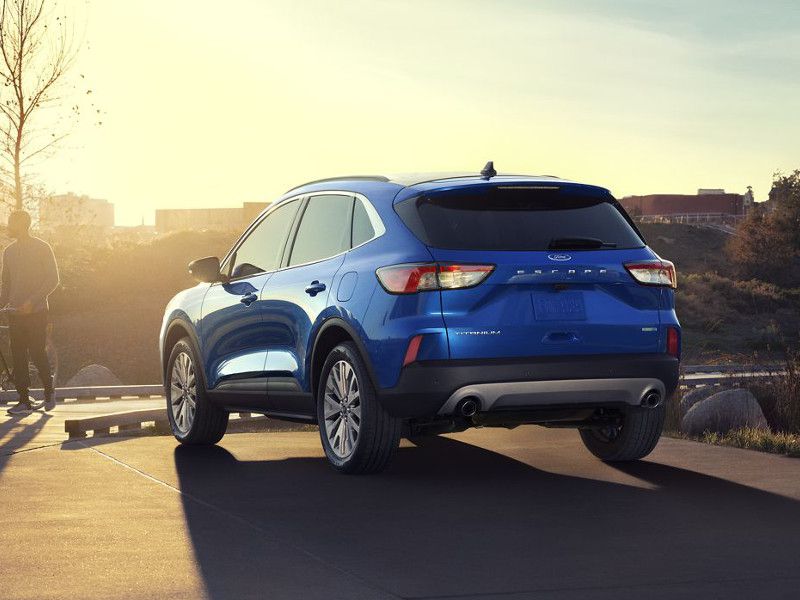
Photo by Ford
2. Escape Hybrid and Plug-In Hybrid variants are available for 2020.
When Ford redesigned the Escape for the 2013 model year, the hybrid version went on hiatus. But now, it’s back, baby! And not only is the Escape Hybrid back, but it’s also joined by a new plug-in hybrid variant.
The new Escape Hybrid pairs an Atkinson-cycle, 2.5-liter four-cylinder engine with dual electric motors, an electronic continuously variable transmission (CVT), a liquid-cooled lithium-ion battery pack housed under the right rear seating position, and a regenerative braking system. It comes with front-wheel or all-wheel drive. The plug-in version is offered only with front-wheel drive because the larger size of the battery precludes the use of a driveshaft to power the rear wheels. Ford says it will offer more than 30 miles of pure electric driving range and can recharge overnight using a standard household power outlet.
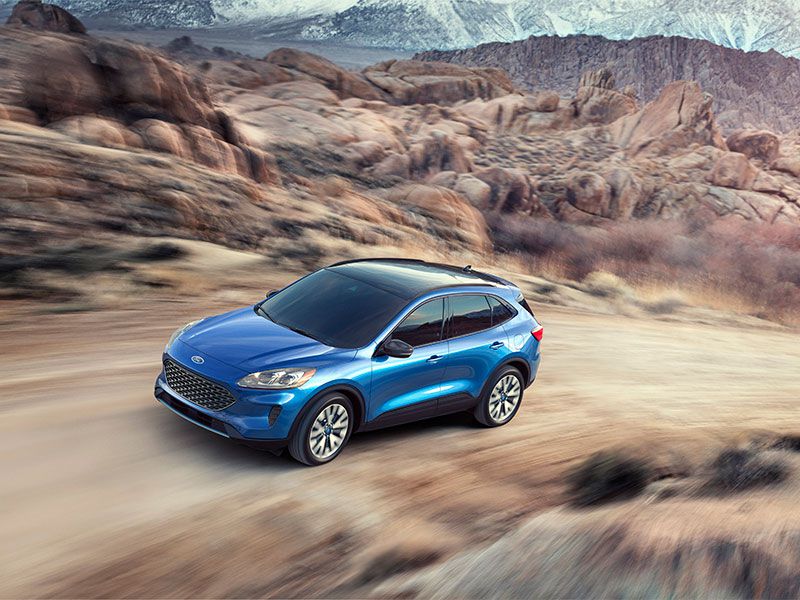
Photo by Ford
3. Hybrid power is standard on the SE Sport and Titanium trims.
Rather than make the Escape Hybrid a separate model, Ford has integrated it into the Escape lineup. The powertrain is standard on the SE Sport and Titanium trim levels, baked right into these vehicles from a pricing and specification perspective. You can swap the hybrid powertrain for a turbocharged 2.0-liter four-cylinder engine, but only with the Titanium.
Why make hybrid power standard on some versions of the Escape? Ford says consumers won’t choose hybrid power if it’s an option, and especially if it’s an expensive option. Eliminating choice and making hybrid power standard for the SE Sport and Titanium removes those obstacles to consumer adoption.
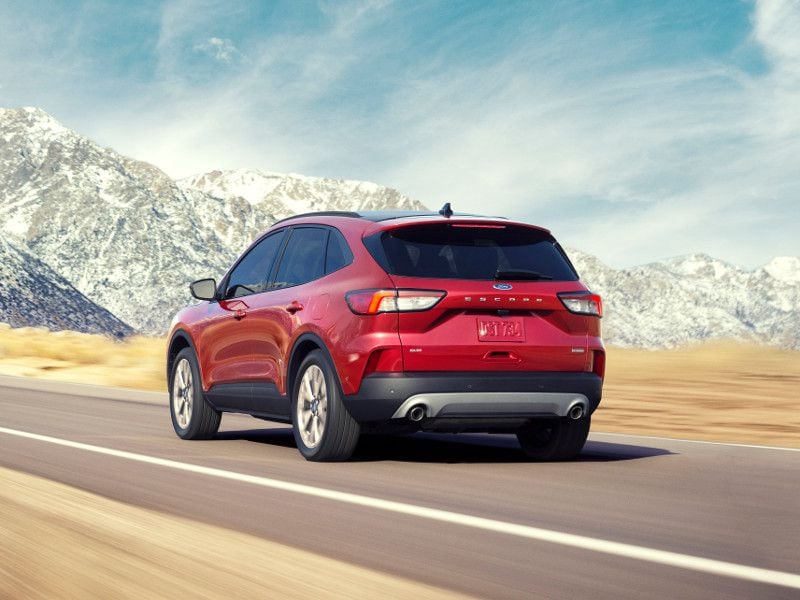
Photo by Ford
4. The Escape Hybrid is more powerful than the standard Escape.
According to Ford, the 2020 Escape Hybrid makes a combined 200 horsepower. That’s more than the SUV’s standard turbocharged 1.5-liter four-cylinder engine, which has 180 hp, but less than the optional turbocharged 2.0-liter four-cylinder engine, which cranks out 250 hp. If this were a fairy tale, you might say the Escape Hybrid is just right.
The plug-in hybrid is slightly more powerful, making about 210 hp, but it’s much larger and heavier battery mitigates any performance improvements. The plug-in hybrid powertrain will be available on the Escape's SE, SEL, and Titanium trim levels when it goes on sale in early 2020.
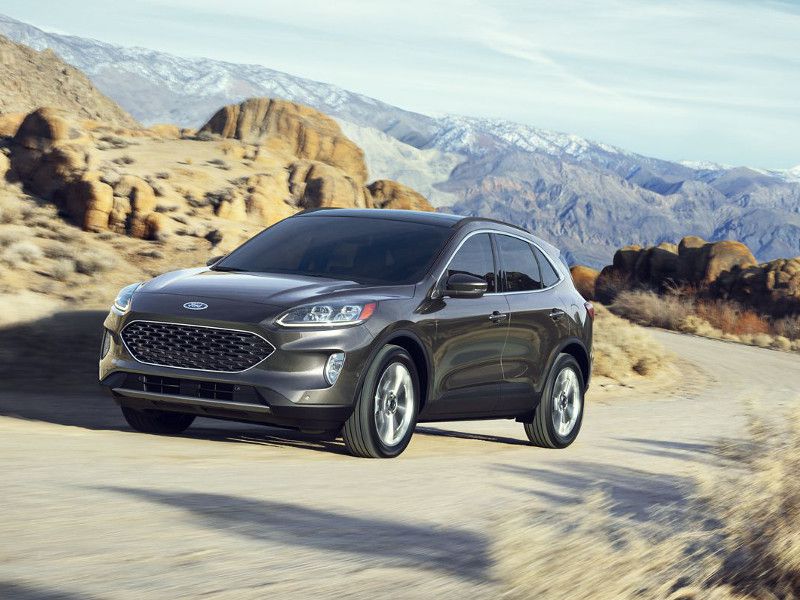
Photo by Ford
5. The Escape Hybrid gets 40 mpg without trying.
As of this writing, the EPA has not finalized Escape Hybrid fuel economy ratings. However, during a test drive in the Louisville, Kentucky, region near where the Escape is built, the SUV averaged 40.3 mpg.
Driving included city, suburban, freeway, and country roads, as well as regular switching among the Escape Hybrid’s different driving modes. Of the 73.4 miles covered, 33.8 of them were “electric miles,” according to the SUV’s trip computer. That’s because the Escape Hybrid can operate in electric mode at speeds up to 85 mph.
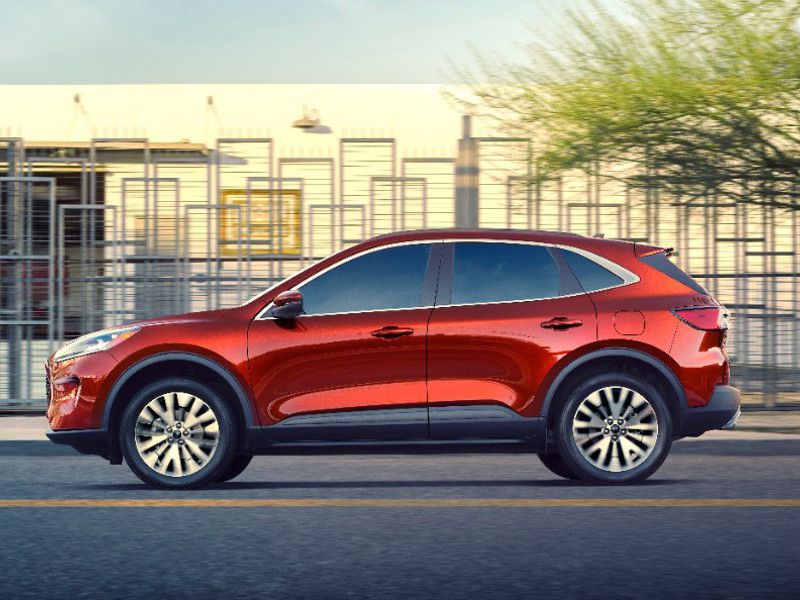
Photo by Ford
6. There's little compromise in terms of passenger space.
As far as interior space is concerned, the Escape Hybrid requires little in the way of compromise. Up front, the Escape Hybrid’s head, leg, shoulder, and hip room dimensions mirror a standard Escape. Rear passengers will find slight reductions in terms of legroom, but otherwise, there is no difference.
In a standard Escape, legroom measures up to 40.7 inches thanks to the SUV’s sliding and adjustable back seat. The Escape Hybrid has one, too, but maximum rear legroom is 38.9 inches.
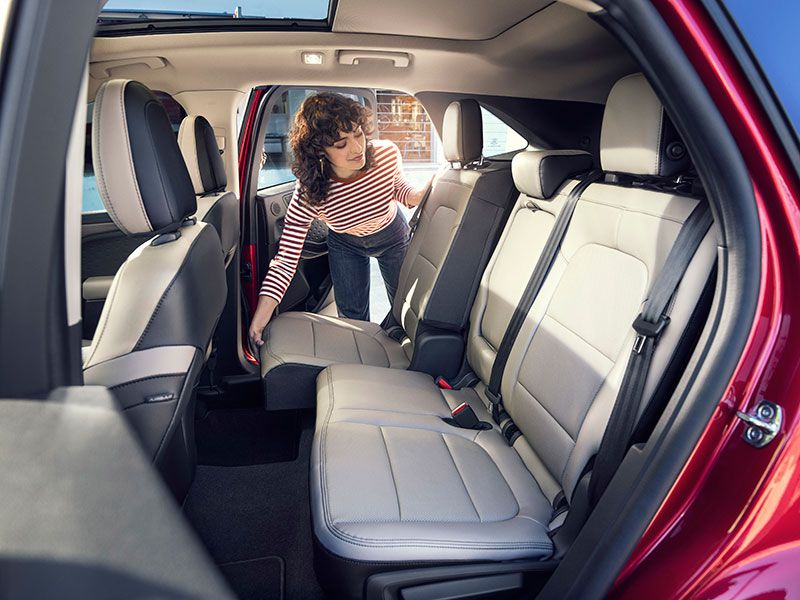
Photo by Ford
7. There's nearly as much cargo space as standard Escape.
With the Escape Hybrid, Ford places the SUV’s 12-volt battery under the cargo area floor, immediately behind the right rear seat. This eliminates an owner’s ability to move the cargo floor into a lower position, as is possible with a standard Escape, reducing maximum cargo volume.
However, the compromise isn’t significant, especially if you never use the standard Escape’s adjustable cargo floor. In terms of raw numbers, the standard Escape supplies 33.5 cubic feet of volume behind the rear seat, while the Escape Hybrid offers 30.7 cubes. Maximum numbers with the rear seat folded down amount to 65.4 cubic feet in the standard Escape and 60.8 cubic feet in the Escape Hybrid.

Photo by Ford
8. Infotainment includes Waze, Alexa, and more.
Every 2020 Escape Hybrid comes with Ford’s Sync 3 infotainment system. It includes a long list of features, starting with an 8-inch touchscreen. Apple CarPlay, Android Auto, SiriusXM satellite radio, 911 Assist emergency response, Ford + Alexa digital voice assistant integration, and Waze navigation capability are all standard with Sync 3, too.
The Escape Hybrid also includes FordPass Connect technology with a 4G LTE Wi-Fi hotspot, remote access to certain vehicle functions, and a vehicle-finder feature. Upgrade to the Titanium trim, and the Escape Hybrid is equipped with a 10-speaker B&O Play premium audio system from none other than the sonic wizards at Bang & Olufsen.
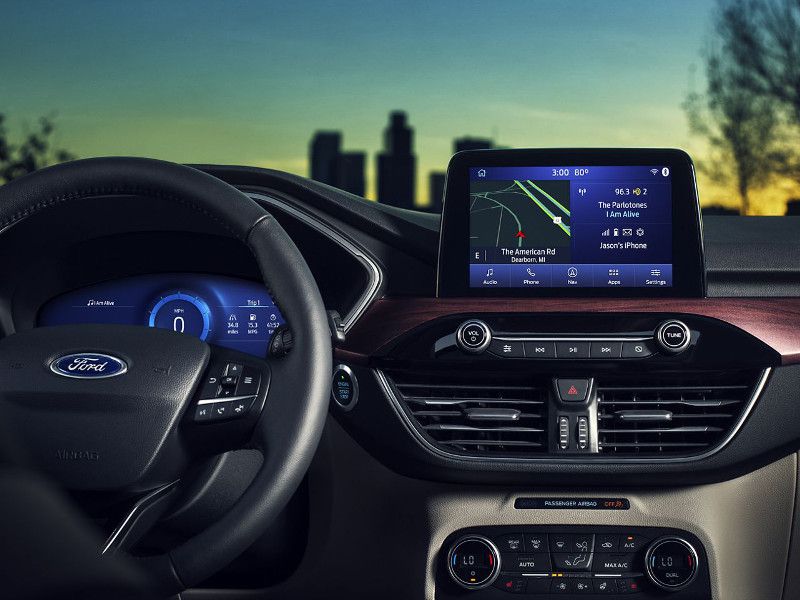
Photo by Ford
9. Refined Ford Co-Pilot360 driving assist tech is standard.
Ford offers two packages of driving assistance technology for the Escape Hybrid. The first, called Ford Co-Pilot360, is standard and equips the SUV with a forward collision warning, pedestrian detection, automatic emergency braking, blind-spot monitoring, a backup camera, rear cross-traffic alert, a lane-departure warning, lane-keeping assist, a driver monitoring system, and automatic high beams.
The upgrade package is called Ford Co-Pilot360 Assist. Standard on the Titanium model, it adds adaptive cruise control with stop-and-go capability, lane-centering assist, and evasive steering assist. These features are unavailable with the SE Sport. During a test drive of an Escape Hybrid Titanium, these technologies proved smooth and refined in terms of operation, and accurate in terms of warnings and driver assistance. However, on the narrow, shoulder-less country roads in and around Louisville, the lane-centering assist struggled as it made constant corrections. This was not a problem in the wider lanes of nearby Interstate 65.
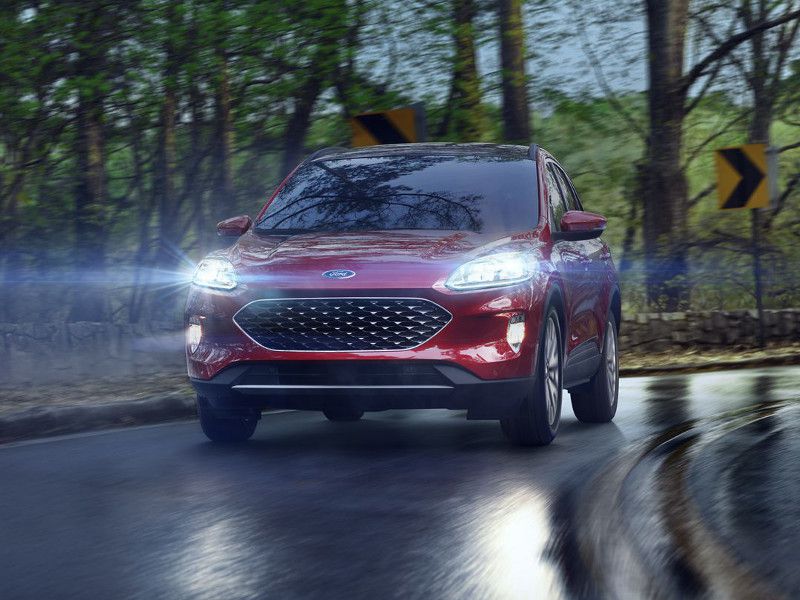
Photo by Ford
10. The Escape Hybrid can park itself.
The Titanium model also includes Active Park Assist 2.0. This is a fully autonomous self-parking system that operates all vehicle functions as the Escape Hybrid finds and parks itself in a parallel or perpendicular space. It can also extract itself from these spaces, an especially useful feature if you get boxed in against the curb.
There is a caveat: You need to sit in the driver’s seat, ready to take over if necessary. This is not one of those remote-controlled autonomous parking systems like BMW, Hyundai, and Tesla offer. Given the trouble Tesla owners are experiencing with that brand’s Summon feature, though, it’s probably for the best that you need to be in the Escape Hybrid for Active Park Assist 2.0 to work.
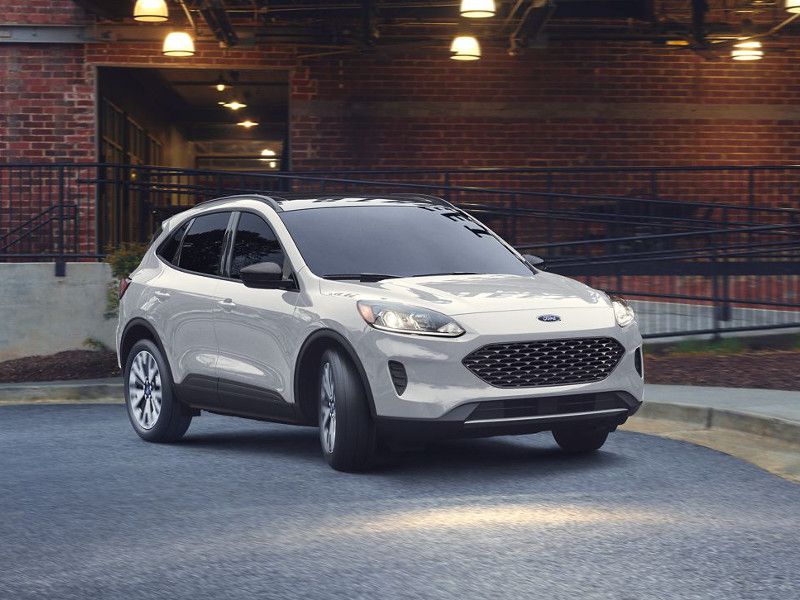
Photo by Ford